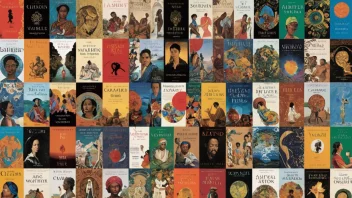Mystery writing is an art that captivates readers with its intriguing plots and unexpected twists. At the heart of this genre lies a rich tapestry of literary devices that enhance storytelling, evoke emotion, and keep the audience guessing until the very last page. From foreshadowing to unreliable narrators, these devices are essential tools for writers aiming to craft compelling mysteries. Here, we explore the most impactful literary devices that shape the world of mystery writing.
Foreshadowing
Foreshadowing is a powerful device that hints at future events, creating suspense and anticipation. This technique can subtly drop clues that lead readers to piece together the mystery before its resolution. For instance, in Agatha Christie’s Murder on the Orient Express, early mentions of the characters’ backgrounds plant seeds for the eventual reveal of the murderer. Effective foreshadowing not only engages readers but also encourages them to revisit earlier chapters, searching for signs they may have missed.
Red Herrings
Red herrings are distractions that mislead readers, steering them away from the truth. These false clues create a sense of uncertainty and surprise when the real culprit is finally revealed. In many classic detective novels, authors skillfully deploy red herrings to misdirect both their characters and the audience. For example, in The Girl with the Dragon Tattoo by Stieg Larsson, several characters are introduced as potential suspects, only for the narrative to lead readers down a winding path before unveiling the actual villain. The effectiveness of red herrings lies in their ability to keep the mystery alive and engaging.
Unreliable Narrator
An unreliable narrator offers a unique perspective that challenges readers’ assumptions. This device allows authors to weave complex narratives where the truth is obscured by the narrator’s biased viewpoint. In The Woman in the Window by A.J. Finn, the protagonist’s mental state raises questions about her interpretations of events, leading to shocking revelations. By employing an unreliable narrator, writers can enhance the tension and intrigue, making the eventual uncovering of the truth all the more satisfying.
Symbolism
Symbolism enriches mystery writing by adding layers of meaning to objects, characters, or settings. A seemingly innocuous detail can become a crucial element in unraveling the plot. In And Then There Were None by Agatha Christie, the ten figurines that represent each character serve as a symbolic reminder of their fate. As the story progresses, the symbolism deepens the mystery, helping readers to connect the dots. This device elevates the narrative, encouraging a more profound analysis of the story’s elements.
Imagery
Imagery plays a vital role in creating a vivid and immersive experience for readers. Through descriptive language, authors can evoke emotions and set the tone of the story, enhancing the overall mood. In Big Little Lies by Liane Moriarty, the use of imagery to depict the idyllic yet deceptive setting of Monterey adds a layer of tension to the unfolding mystery. By painting a picture in readers’ minds, imagery allows them to feel the weight of the narrative, making the mystery more engaging and poignant.
In conclusion, the impact of literary devices in mystery writing cannot be overstated. Foreshadowing builds suspense, red herrings keep readers guessing, unreliable narrators challenge perceptions, symbolism deepens the narrative, and imagery immerses the audience in the story. Together, these elements create a rich, engaging experience that captivates readers and leaves them yearning for more. As you delve into the world of mystery literature, pay close attention to these devices and appreciate the skill with which authors employ them to craft unforgettable tales.






